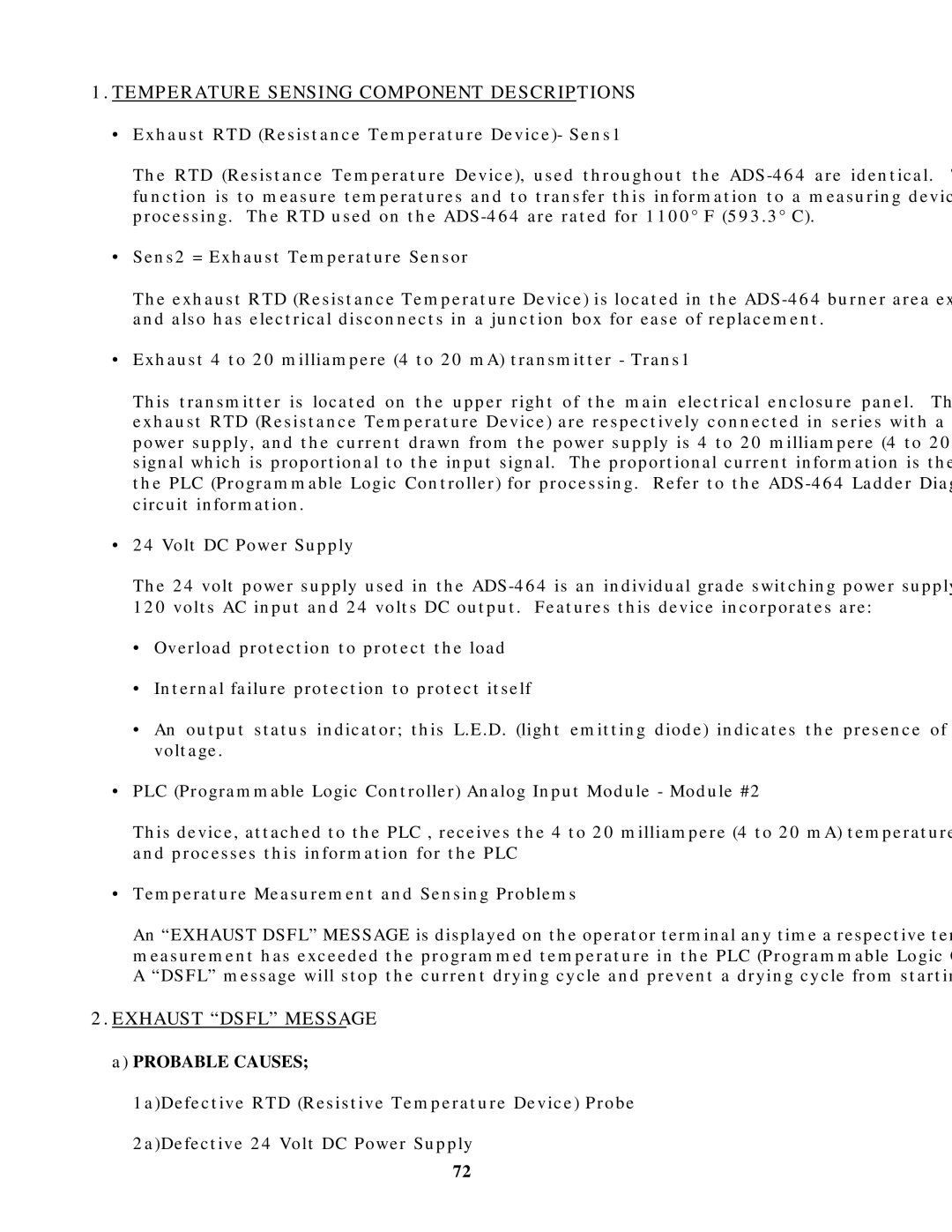1.TEMPERATURE SENSING COMPONENT DESCRIPTIONS
•Exhaust RTD (Resistance Temperature Device)- Sens1
The RTD (Resistance Temperature Device), used throughout the
•Sens2 = Exhaust Temperature Sensor
The exhaust RTD (Resistance Temperature Device) is located in the
•Exhaust 4 to 20 milliampere (4 to 20 mA) transmitter - Trans1
This transmitter is located on the upper right of the main electrical enclosure panel. The intake and exhaust RTD (Resistance Temperature Device) are respectively connected in series with a 24 volt DC power supply, and the current drawn from the power supply is 4 to 20 milliampere (4 to 20 mA) output signal which is proportional to the input signal. The proportional current information is the connected to the PLC (Programmable Logic Controller) for processing. Refer to the
•24 Volt DC Power Supply
The 24 volt power supply used in the
120 volts AC input and 24 volts DC output. Features this device incorporates are:
•Overload protection to protect the load
•Internal failure protection to protect itself
•An output status indicator; this L.E.D. (light emitting diode) indicates the presence of DC output voltage.
•PLC (Programmable Logic Controller) Analog Input Module - Module #2
This device, attached to the PLC , receives the 4 to 20 milliampere (4 to 20 mA) temperature information and processes this information for the PLC
•Temperature Measurement and Sensing Problems
An “EXHAUST DSFL” MESSAGE is displayed on the operator terminal any time a respective temperature measurement has exceeded the programmed temperature in the PLC (Programmable Logic Controller). A “DSFL” message will stop the current drying cycle and prevent a drying cycle from starting.
2.EXHAUST “DSFL” MESSAGE a) PROBABLE CAUSES;
1a) Defective RTD (Resistive Temperature Device) Probe
2a) Defective 24 Volt DC Power Supply
72
